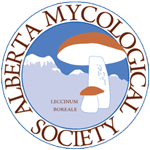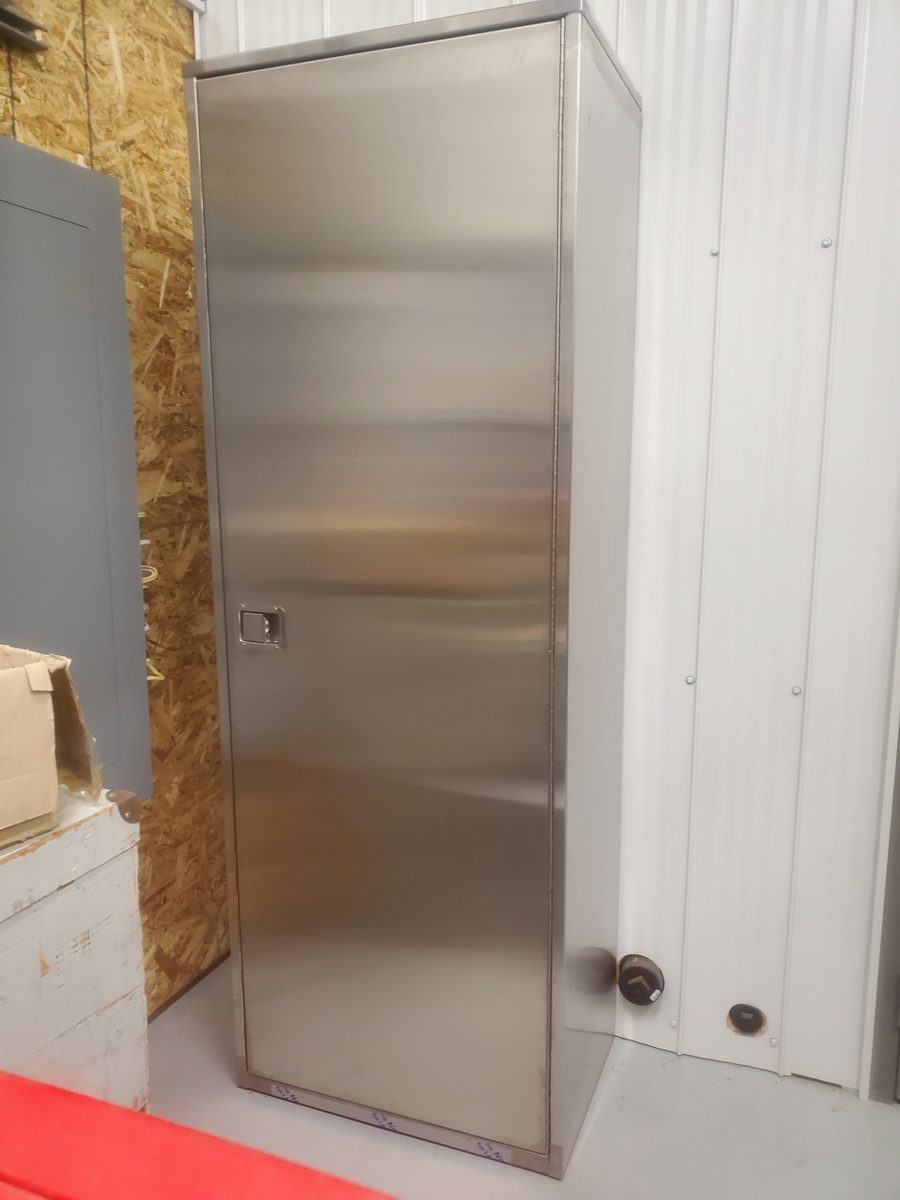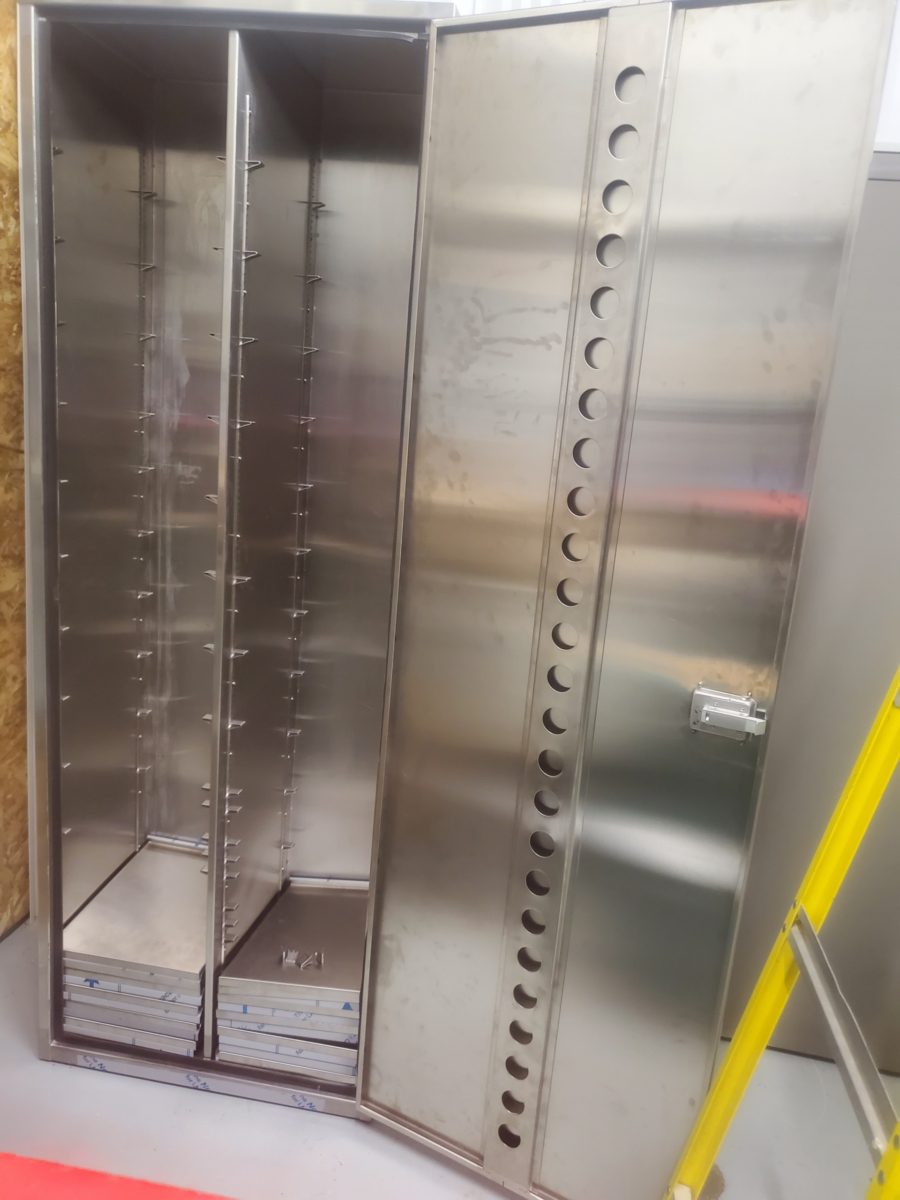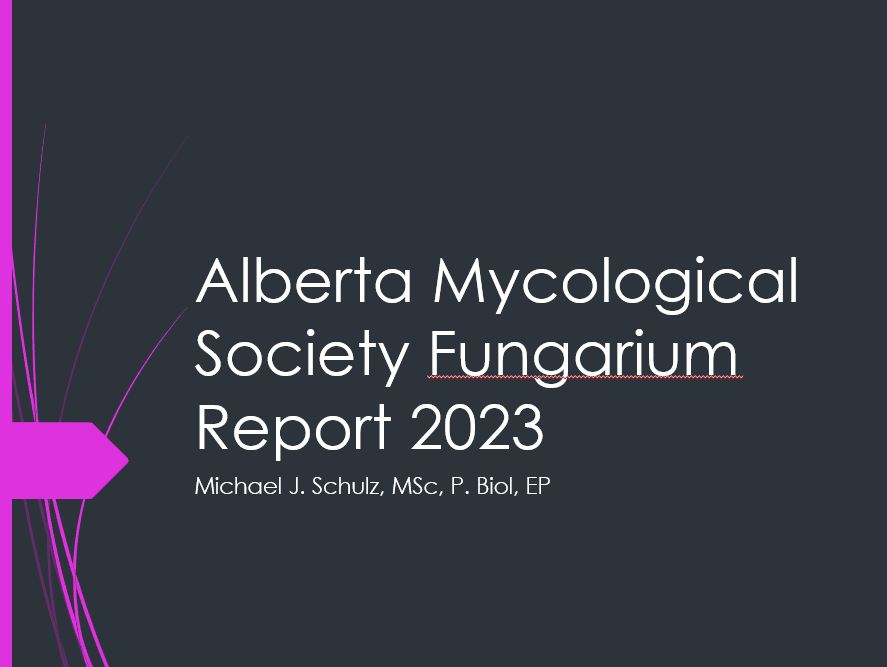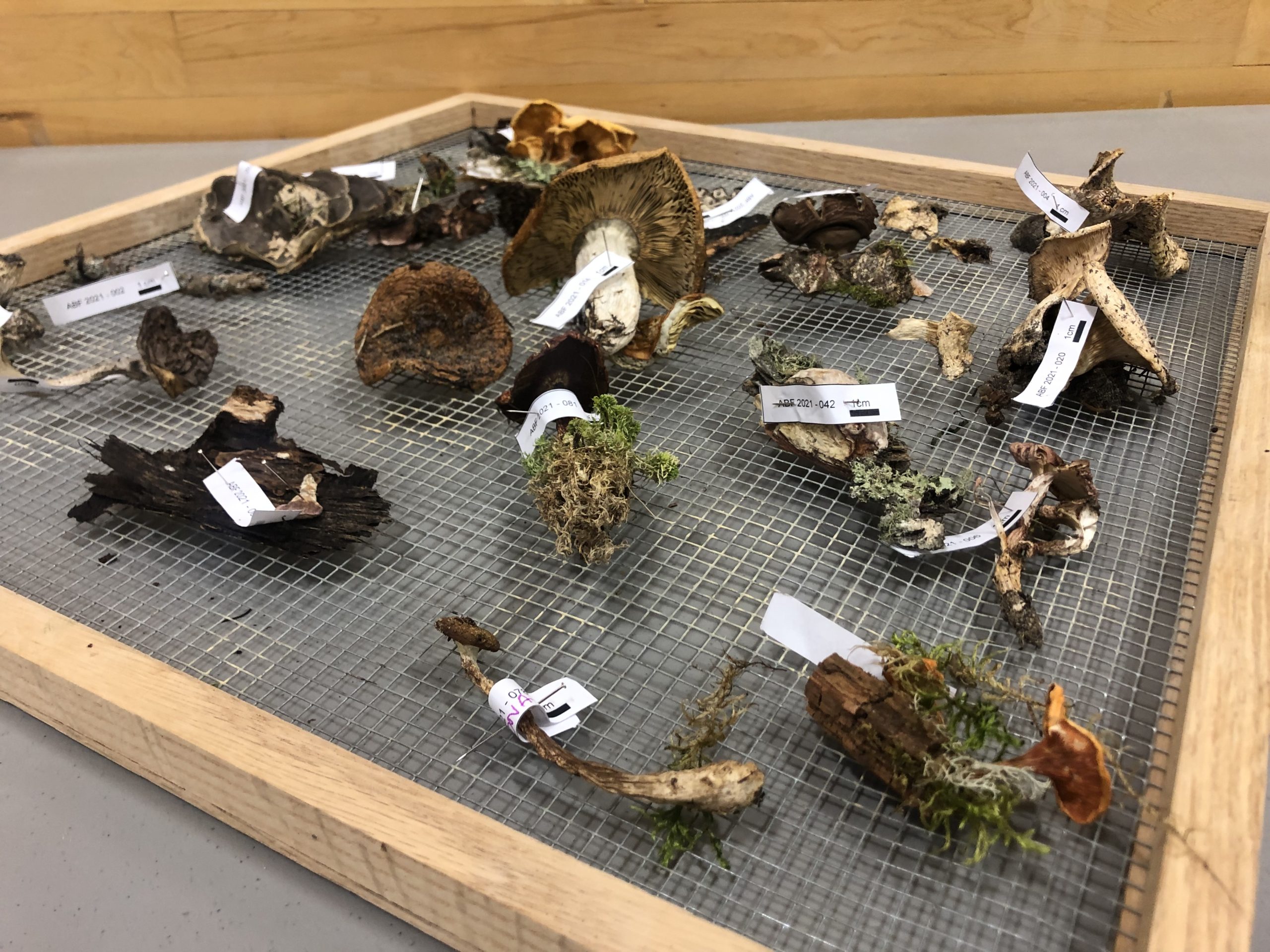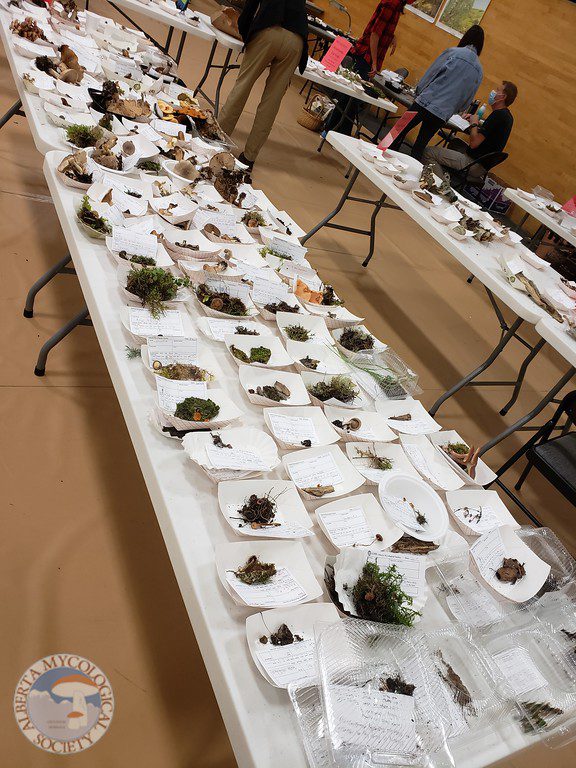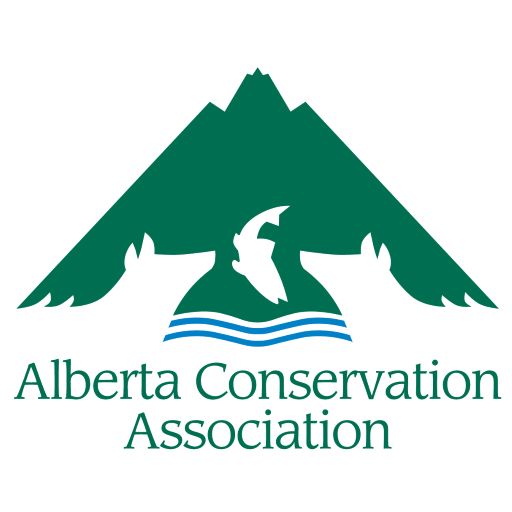Fungarium and Fungal Database
The Alberta Mycological Society (AMS) is committed to providing fungi-related education and engaging with the public to bring appreciation and awareness about the importance of fungi in our ecosystems. In pursuit of this mission, our incredible members endeavour to explore our natural environments and through citizen science, identify, classify, and understand the fungi species that grow in our western Canadian regions. We aim to develop and maintain two scientific programs, a fungarium and a fungal database, so that our members may build up our knowledge and continue sharing it with future generations.
What’s a fungarium?
A fungarium is like a library of physical fungal specimens that are dried, preserved, and annotated with important information like their DNA, natural habitat, and other identifying characteristics. All the specimens are arranged so that they can be retrieved easily and re-examined for further research or shown to the public during educational events. Fungariums are an incredibly important resource for biodiversity and ecological studies. The Kew Royal Botanical Gardens is home to a tremendous, inspiring fungarium.
In a fungarium, specimens are catalogued and organized in special cabinets that preserve them and protect them from outside elements. The cabinets are constructed from steel and have elastomer seals to keep the inside airtight. We want to keep moisture, bugs, and other critters away from our valuable fungi! Fungariums use the same types of cabinets as herbariums.
The picture on the right shows a cabinet provided by a company called Bradford Systems. This is just one type of cabinet, and there are many other companies that can also provide fungarium and herbarium cabinets.
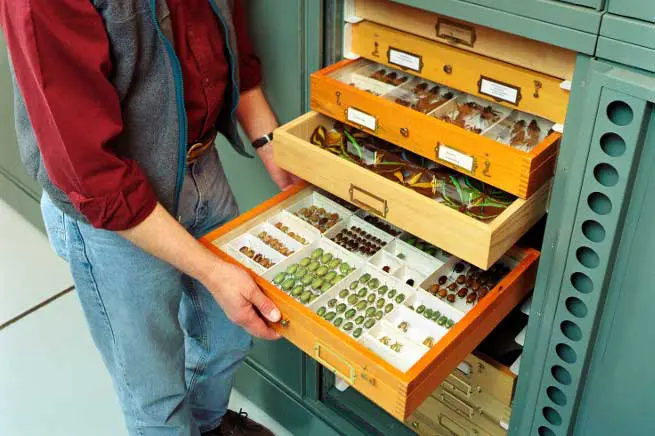
How are fungariums important?
Fungi form one of the major Kingdoms of life. They play a crucial role as symbiotic partners with plants, play an essential role in providing food for most members of the Animal Kingdom directly or indirectly. They also play an important role with bacteria in recycling all organic material.
- In reviewing Alberta Species at Risk protocols, fungi are not even listed; therefore, no protocols for fungal species protection exist.
- In the 2020 Canadian Species at Risk Initiative, fungi were also not included.
- However, the Canadian Wild Species 2020 project catalogued over 30,000 fungal species from Alberta, 2,500 species from Saskatchewan, and less than 500 species from Manitoba. (The number of collections between provinces varied due to limited volunteer resources from the AMS Citizen Science Fungal Biodiversity Initiative.)
There are thousands more unidentified and uncatalogued fungal species in western Canada. These specimens and associated records will be a resource to researchers, students, and a future resource for evaluating the status and health of endemic fungal species in Alberta. The project will also provide an opportunity to train and utilize citizen scientists in this ongoing biodiversity work. Finally, a fungarium would allow for the expansion of fungal collections year-round and the preservation of those collections for future study and DNA sequencing.
Why do we need a fungarium?
The Provincial government, in issuing collection permits for Parks and Protected Areas, makes it a requirement that all specimens collected be accessioned into an accredited Herbarium. In spite of this, no Herbaria in Alberta (University of Alberta cryptogamic Herbarium, Royal Alberta Museum or Northern Forestry Centre) will accept our specimens that we collect during our many forays, especially our Great Alberta Mushroom Foray (GAMF). Our long-term relationships only allow our specimens to be accepted on an ad hoc basis by the University of British Columbia and the Department of Agriculture Mycological Herbarium in Ottawa. Unfortunately, when we send our specimens out of province, we lose access to them and can no longer examine them or perform DNA sequencing or associated research. We’re not alone in this struggle! Other ecological assessments have similar issues with finding a home for important fungal specimens.
During our annual general meeting (AGM) in March 2022, we received the support and approval of our membership to pursue this amazing fungarium project. We applied for and received a Conservation, Community, and Education Grant from the Alberta Conservation Association (ACA) to establish an official, dedicated fungarium in Alberta.
Our Fungarium
We spent much of 2022 looking for a fungarium cabinet supplier. After searching extensively and evaluating the options and costs, we found it most economical to have a local company in Alberta (Pulse Metalworks Ltd.) fabricate our fungarium cabinet to our specifications.
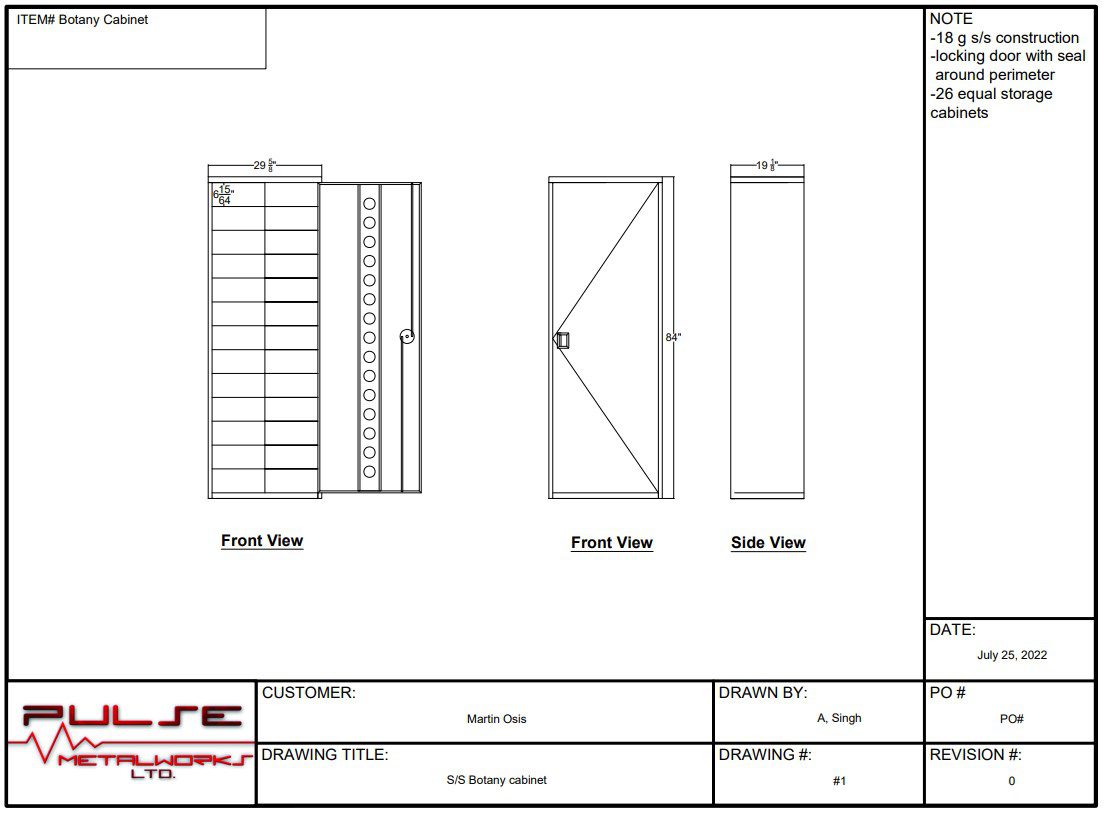
Our Vice President, Michael Schulz, picked up the fungarium and assembled it in its home at Portage College in Lac La Biche, Alberta, which has an extensive environmental studies and natural resources technology programs. In the short term, this fungarium will store major fungal biodiversity contributions and records from citizens and scientists on the status of fungi in Alberta. In the future, the AMS hopes to store and catalogue fungal specimens contributed from citizens and scientists from the greater western Canadian region. Check out the photos!
In the meantime, we have ordered acid-free archiving storage boxes and a printer to mark and catalogue all our specimens.
Check out our Fungarium Report that Mike presented at our Annual General Meeting on March 18, 2023.
So what’s next?
As part of this project, the AMS will be doing the following:
1. Develop Standards of Practice and Operation Manual.
2. Train volunteers to catalogue fungal specimens and prepare them for submission for DNA sequencing.
3. Catalogue outstanding collections from the 2021 GAMF.
4. Receive, prepare, curate and catalogue specimens from the 2022 collection season, including those from GAMF.
5. Send all cryptic and ambiguous, tentatively identified fungi or possible new species for DNA sequencing.
FUNGAL DATABASE – What mushrooms grow in Alberta and where?
A fungarium needs a fungal database in this digital age. An online database allows our AMS members across western Canada to learn about our exciting finds. We have undertaken the consolidation of fungal databases in Alberta, combining lists from publications, museums, universities, government, and private collections. This unique and important project will assist the forest industry, government departments, and professional and amateur mycologists in the assessment of fungal biodiversity across Alberta.
Every year during our signature Great Alberta Mushroom Foray (GAMF) event, we collect hundreds of specimens, identify them, and log them into the database. As of December 2022, almost 7,000 specimens have been logged!
You can check out our AMS Fungal Database below.
If you have any questions about this project, please Contact Us and put “Database” in the subject line.
